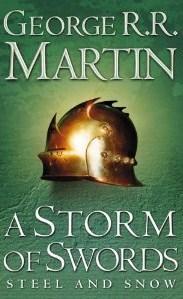I'm only a few hours in, but I'm loving
Pillars of Eternity. The mood in the world is terrific, and the writing has been excellent. So far, it has had something of Planescape: Torment vibe with its dark, macabre themes, though the setting does not have the wackiness that Sigil did.
The combat engine is fun as well. It definitely seems built upon something that resembles 4e combat to me. There are at-will abilities, encounter powers (which are even named as such!), and daily spells. The exception so far is the cipher, the class I chose to play, which uses a mana-like system with a resource pool called "Focus." You gain focus by hitting with melee or ranged weapons, and then spend it with your spells. It's a fun system.
Deflection and Damage Reduction
Armor has interesting differences as well. Like in 4e DnD, there are four defenses: Deflection (i.e. AC), Fortitude, Reflex, and Will. Interestingly, while these can be enhanced with magic items, they seem mostly determined by your characters' attributes and class. Armor, typically, does not enhance Deflection. Instead, it boosts Damage Reduction; donning heavy armor instead of cloth armor does not change your deflection, but instead adds substantial damage reduction to certain kinds of hits. Damage reduction can really help, especially given the grazing mechanic: most "misses" actually are grazes in this system, which can leave a small amount of damage. That graze damage will usually be completely negated with decent armor.
As far as I can tell, there isn't such a thing as armor proficiency. Instead, the main incentive to not wear heavy armor seems to be a speed penalty. After each action, be it shooting an arrow, swinging a sword, or casting a spell, there is a recovery period before you can act again. The heavier your armor, the longer the recovery period. This can be dramatic; the heaviest armor I've seen so far is still just medium armor, and it has a recovery penalty of 50%! Therefore, if those numbers are true, suiting up is going to halve your damage output.
I think the main consequence of this is that one needs to have characters specialize in combat roles. You'll definitely want to have a few characters in a party of 6 who can take on a "tank" role, wearing heavy armor and shields, and using heavy damage reduction to survive on the front lines. Behind them, you can use ranged attackers wearing cloth or light armor that fling spells, arrows, or shoot guns, and it is those characters who will do most of the damage. I personally enjoy this degree of specialization, and it stands in contrast to the 5e dnd approach where fighters can serve not only as tanks, but also as legitimate damage-dealers themselves.
It's less clear to me exactly what one should do for a "melee striker"-style character. I think this is where you end up compromising with medium or light armor, and being careful when engaging to minimize your risk of engaging more than one enemy at once, ensure opponents already are engaged with the tank, etc.
Weapon Choices
The fact that Damage Reduction is such a big part of this game has implications for weapon selections. In 2e DnD, assuming equivalent accuracy, a fast, low-damage weapon will give you equivalent "damage per second" output to a slow, high damage weapon. 3e and 4e didn't have weapon speeds, but you got similar effects from dual-wielding light weapons compared to swinging a big, two-handed sword.
Ultimately, it will come down to how much damage reduction an average foe has, and exactly how much longer the reload times are compared to how much extra damage output you get. If I was really methodical, I'd get out my stopwatch and start measuring this. ... but I'm sure some young buck out there will do this before I get it done!
Endurance and Health
Rather than a single pool of hit points, PoE employs a system that involves a combination of two pools of health systems. Endurance is a comparably small pool of health. As you are hit, therefore, it quickly drops in combat. If you reach zero, you fall unconscious. Most healing spells and potions work to replenish endurance, as do some skills. Fighters, for example, steadily regenerate endurance during combat. Finally, when combat is over, characters almost immediately regenerate all of their endurance.
In contrast, health is a much larger pool. As you take endurance damage, you also steadily lose health. It's unlikely that you'll run out of health in a single encounter. However, after a long series of fights, you'll eventually start to run low. This is dangerous, because dropping to 0 health will kill your character, permanently. Furthermore, aside from a pair of talents (aka feats), I haven't seen a mechanism to heal health aside from resting. Therefore, while endurance is usually one's concern during combat, health is what will ultimately end your adventuring day. One can always rest to heal, but you can carry limited camping supplies, and resting may(?) come with risk of random encounters (maybe...I'm not sure of this).
What I like about the system is that, most of the time, character death isn't something that one has to worry about. Most of the time, you'll bounce back up after a difficult fight, even if you get knocked unconscious. But at the same time, you have to take damage seriously, because it will eventually catch up with a character, forcing a risky rest out in the wildnerness or within a dungeon. There is still risk and there are still consequences.
As you can tell, I'm having a blast with this game, and am really enjoying learning the mechanics of this dnd-esque system. Most of the changes have seemed like very positive improvements, or at least very enjoyable alternative mechanics. Can't wait to get back in game soon!

























